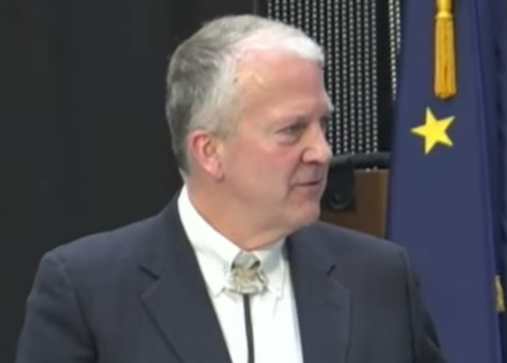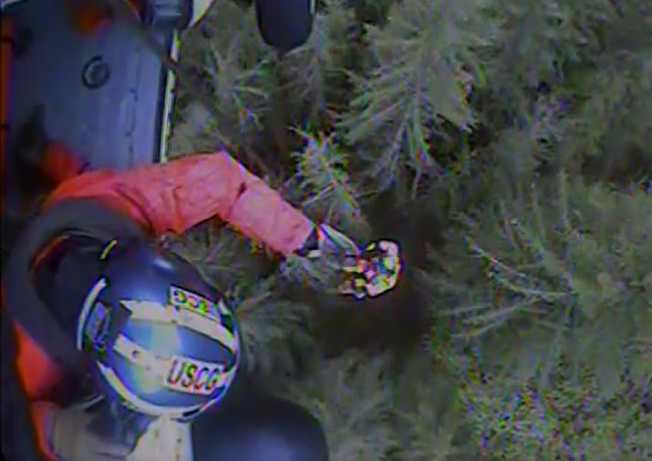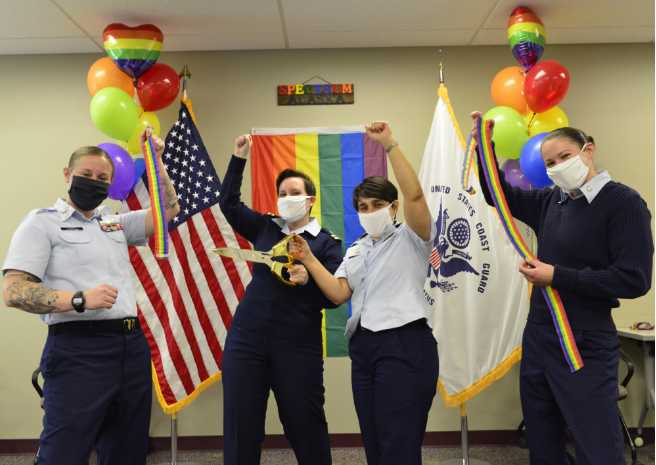
JOINT BASE ELMENDORF-RICHARDSON, Alaska — His boat swamped, a nasty Western Alaska storm taking hold, and hypothermia rapidly setting in, a stranded boater needed a lifeline – and fast.
The man had attempted an ill-fated odyssey from Dillingham to Togiak – 68 miles apart by air – in nothing more than a skiff. Alaska, via the oftentimes unpredictable weather, has a way of quickly turning from majestic to malevolent, and the seething waves had thoroughly swamped the man’s boat.
Though he managed to get to shore, his chances of surviving the duration of the storm were nil.
An Alaska State Trooper flying a small Super Cub airplane spotted the man but couldn’t land on or near the rugged shoreline. The stranded man couldn’t be reached by land and the roiling surf prevented rescue by boat.[xyz-ihs snippet=”adsense-body-ad”]Only a helicopter could hover in and save the man, and the sole helicopter in range was under the stewardship of Chief Warrant Officer 4 Justin Lindell, 1st Battalion, 207th Aviation Regiment, then a state trooper based out of King Salmon.
That helicopter was an R-44 Raven weighing in at just over 1,500 pounds empty. Lindell knew the mechanical mosquito would struggle in the gale-force winds, but he also knew he and the Raven were the man’s only hope for survival.
Would he risk his own life in an attempt to save another?
Born to fly
Lindell’s father, Clyde, was a UH-1 Iroquois door gunner and later an OH-6 Cayuse crew chief during the Vietnam War. Being able to take off from small air fields and place troops just about anywhere in the jungle, helicopters really proved their worth during the conflict.
Lindell said his father was offered a chance at earning his pilot wings at flight school, but turned it down – a decision he always regretted.
Despite his father missing his shot, the dream of flight under a whirling rotor never departed from Lindell.
He joined the active Army in 1992 as an AH-1 Cobra attack helicopter crew chief, responsible for the maintenance and operation of the helicopter.
Because the Army was phasing out Cobras in favor of AH-64 Apaches, Lindell was asked to switch jobs, and he became an enlisted OH-58 Kiowa aeroscout observer.
Aeroscout observers were responsible for identifying targets and for navigation of the scout and reconnaissance Kiowas. Unfortunately, his new job was also phased out in 1996.
Lindell joined the Montana Army National Guard and was picked up for flight school for the UH-1, the same bird his father served on.
“I thought that was pretty cool,” he said with a wistful smile.
Even by the standards of the mid 90s, the UH-1 “Huey” was old technology. With a single engine and 50s-era flight controls, Lindell was once again part of an endangered species.
Old as the venerable Huey was, Lindell flew it to good effect, including a stint fighting raging wildfires in Yellowstone Park.
His civilian job would bring him to serve with the Alaska Army National Guard where he would transition to the UH-60 Black Hawk helicopter.
State lawman
A yen for rotors wasn’t the only thing Lindell inherited from his father. He would also gain an appreciation for the law from his Montana Highway Patrol dad.
It was when Clyde returned from a business trip the younger Lindell discovered Alaska.
“When I was a little kid, he went to the state trooper convention, and he met a trooper from Alaska,” Lindell explained. “He brought back a picture of a Super Cub, and they were flying around out in the Bush. I thought it was the coolest thing in the world.”
When Lindell left active Army service, he joined the Montana Highway Patrol and served primarily in highway enforcement.
During a hunting trip to Alaska, he said his yearning for the Last Frontier really solidified. Fortunately, the Alaska State Troopers was recruiting nonresident lawmen.
“Two things I always wanted in life was to be a state trooper in Alaska and be an Army pilot,” Lindell recalled. “So, I was lucky enough to be both.”
For six years, Lindell flew the little R-44 out of King Salmon for fisheries patrols, big-game guide enforcement, search and rescue, investigations, and flying other troopers out for investigations.
In 2009, he transferred to Anchorage’s Wildlife Investigations Unit where he flew the more substantial AStar helicopter, which was almost twice the weight of the spindly R-44.
Desert Black Hawk
In 2007, Lindell volunteered to deploy to Balad Air Base, Iraq, with C Company, 1-207th Aviation, Hawaii Army National Guard.
He supported VIP and air-assault missions, and was assigned to the flight detail for Ambassador Ryan Crocker.
He attended the Instructor Pilot Course upon his return to the states in 2008.
Lindell returned to Iraq in 2010 with B Company, 1-207th Aviation, at Camp Liberty. For the most part, he was supporting general officers’ battlefield circulation.
The war may have been drawing down, but Lindell said some of his most memorable service came in support of Operation Proper Exit, designed to bring wounded warriors to the scene where they sustained their injuries and wounds.
He took the wounded warriors to places like Fallujah and Sadr City. His UH-60 hovered over the scene of an improvised explosive device attack or a chaotic firefight, and the troops peered out to gain an entirely different perspective of the place inextricably burned into their memories.
“They were giving them a chance to leave Iraq on their own terms, which they never got to do before they got hurt,” Lindell said. “We took them to the exact place where they got wounded, so they could see it from the air.
“It brought them a lot of closure, getting to see those places,” the pilot continued. “It meant a lot to them, and it meant a lot to me to be able to do that for them.”
The Black Hawk’s ability to hover gave Lindell the opportunity to help wounded warriors in ways only a helicopter pilot could.
It was the same ability he needed on a stormy Alaska day.
Angel in the sky
Lindell decided, yes, he would take the risk of flying his small R-44 into the churning storm. The man stranded on the isolated shore couldn’t afford equivocations.
“The weather was getting worse,” Lindell said. “I knew if I didn’t pick him up, he probably wasn’t going to make it.”
Lindell found the boater quickly enough, but it would take a few attempts at landing on the shore.
Once he finally touched the tiny Raven down, he had to “friction down” the flight controls.
He couldn’t turn the engine off, because the main rotor – under the influence of the wind – could droop and potentially cut off the tail boom, stranding both men on the remote beach.
He walked out to the man – too weak to stand – and helped him back to the helicopter, flying him to Dillingham, where ambulances were waiting to whisk him to the hospital.
Lindell recently retired from the Alaska State Troopers after 18 years in law enforcement to serve full time in the Alaska Army National Guard training new UH-60 pilots and to keep veteran pilots current.
In closing the law-enforcement chapter of his life, the harrowing scene on that Western Alaska shore still stands out in his mind.
“That was probably the most memorable, because he probably wasn’t going to live very long,”
Lindell said. “So, it made me feel good that I was able to go out and help somebody.”[xyz-ihs snippet=”Adversal-468×60″]








